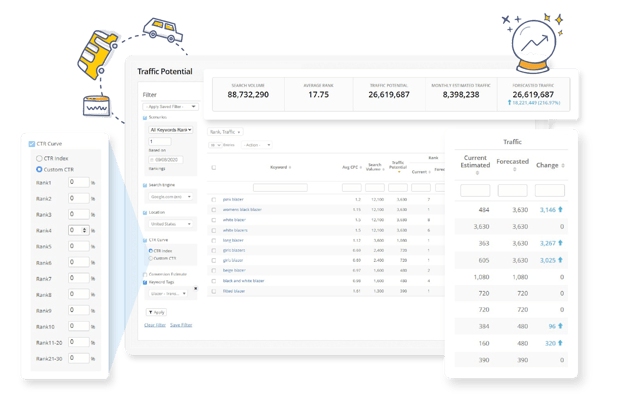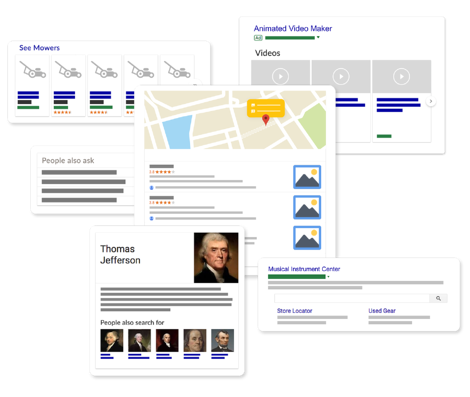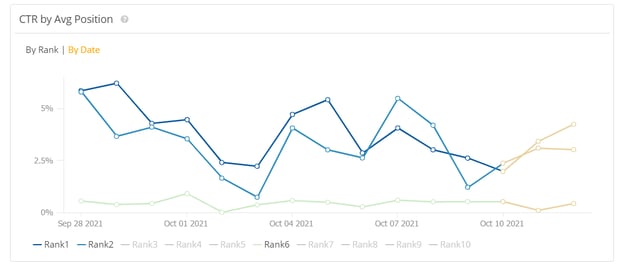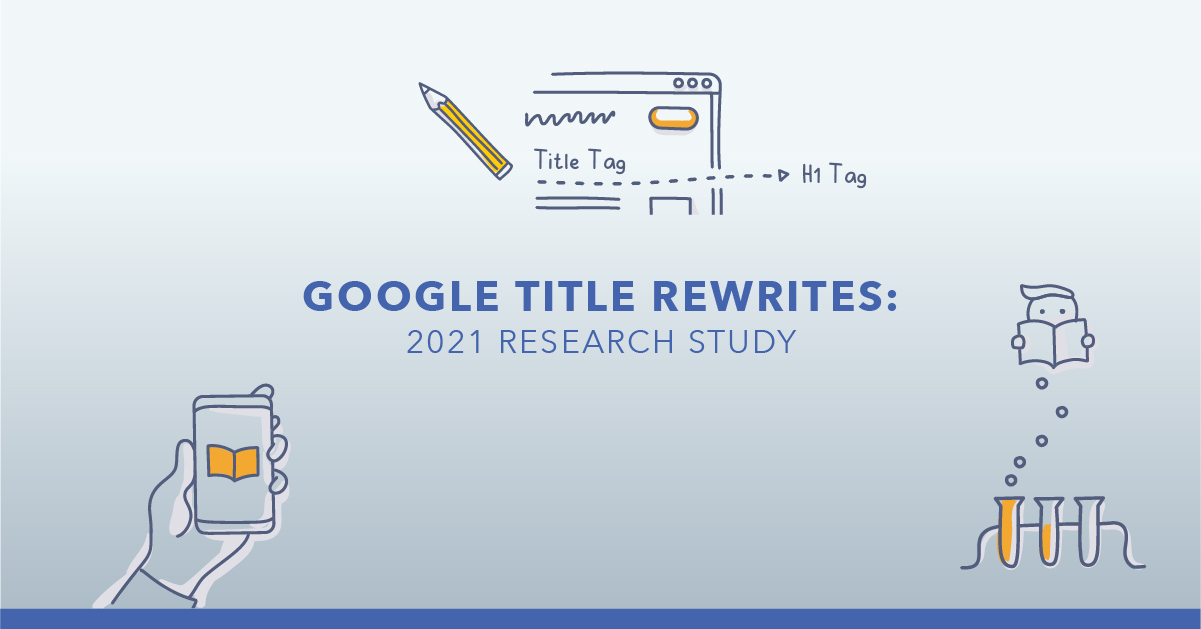What is Organic CTR?
Organic click-through rate, or CTR, is the number of searchers who clicked on your organic listing out of the total number of searchers who saw it.
In a simple equation form, organic CTR = Organic Clicks / Impressions
But once you find your CTR data, what do you do with it? That’s what we set out to answer in this post.
Before we jump into the specifics, see the latest CTR numbers across various industries in the LARGEST click-through rate study EVER.
Why Are Organic CTR Curves Important?
CTR trends let you benchmark your performance to industry averages. This provides the opportunity to prioritize content optimizations and report on performance.
The ability to accurately forecast the traffic that organic search improvements can bring is perhaps the biggest benefit.
There are a number of other actionable use cases that require CTR trends, and the insights can be used to strengthen your SEO campaigns and improve your CTR.
How to Use CTR Data
We’ll go through each example in turn, but here’s a quick takeaway list of how to use CTR:
- Forecast your traffic potential >
- Differentiate between paid and organic >
- Understand crowded search engine results pages (SERPs) >
- Update page title tags >
- Benchmark your CTR by industry standards >
- Compare mobile versus desktop performance >
- Address the right searcher intent >
- Run SEO tests >
- Implement schema markup >
- Prioritize optimizations >
- Uncover seasonality trends >
- Fix keyword cannibalization >
- Benchmark CTR to different content types >
Some of these examples overlap slightly, but we want to show you how important it is to have an understanding of click-through rate!
With that being said, let’s go through each of these opportunities.
#1. Forecast Your Traffic Potential
SEO forecasting offers a sneak peak into potential SEO performance.
As we wrote in a previous post on SEO forecasting, “potential traffic can reveal potential sales.” That makes forecasting a great way to prove out the value of SEO!
Because forecasting requires some mathematical inputs — CTR included — this is another opportunity to leverage click-through rate data.
The analysis is all the more simple when you use an SEO forecasting tool.
This way, you can run a forecasting analysis to prove out how SEO both makes and saves your company money, and inform your own SEO strategy to prioritize content projects and optimizations.
Don’t forget: Access to the latest CTR trends is a great benefit for accurate SEO forecasting for 2022.

#2. Differentiate Between Organic and Paid Search
Your organic CTR trends can call attention to the difference in performance between paid and organic listings.
This could be a great opportunity to show that organic CTR is actually high enough to pull back on paid spend.
Not only would this help your company save money, it would prove out the value of SEO to your organization.
If the relationship between organic and paid search is of interest to you, we recommend this blog: The Benefits of SEO and PPC Integration.
#3. Understand Crowded SERPs
You don’t need us to tell you that not all rank positions are created equal.
The SERPs are crowded these days!
All of this noise can have an impact on your CTR.

If, for example, rank position 1 last year didn’t have any search feature above it (e.g. Answer Box, ads, image carousel, etc.) it would appear at the top of the results page.
But let’s assume that today that organic listing — still in rank position 1! — shares the SERP with the likes of the Answer Box and ads.
That organic listing is going to be pushed down the page. The CTR would most likely also drop.
Recommended Reading: My Rankings Haven't Dropped but My Organic CTR Tanked - Help!
Analyzing CTR in this case lets you analyze what’s changed on the SERPs.
On the other hand, this analysis can answer why lower positions may have a higher CTR. As a result of the busy SERPs, users’ eye patterns have begun to change. They now bounce around the SERP until they find what they’re looking for.
#4. Update Title Tags
A key insight that CTR reveals is if your page title tag is enticing. Is it convincing users to click your listing?
If your CTR is low, then it can be worth it to reevaluate your title tags. Consider running a title tag test to see how different styles (like keyword placement and length) affect CTR.
But don’t forget to offer value to searchers!
#5. Benchmark Your CTR by Industry Standard
Comparing your own performance to that of your industry as a whole shows you an overview of your performance.
If your CTR trends better than the industry average, congratulations! You can use this to earn more buy-in for SEO, or just generally prove out the value of the organic channel.
If your CTR doesn't trend better than the industry average, go back to the other use cases mentioned here. Re-optimize those title tags, confirm user intent, etc.
So, what are those industry standards?
In our recent CTR research study (the largest ever of its kind!) we break down 13 industry CTR trends.
#6. Mobile versus Desktop
Comparing CTR trends across device types shows how user behavior changes depending on the device used for search.
For example, it’s not all about position 1 with mobile. In fact, in our CTR research study, we found that mobile users are less likely to click top-ranked listings than desktop users.
Analyzing CTR across devices also demonstrates that user intent can change across devices.
#7. Address the Right Searcher Intent
Analyzing your CTR can be a clue to how well you address user intent.
As a quick refresher, there are four types of intent:
- Informational
- Navigational
- Local
- Transactional
To even rank on the SERP for a query, you have to tailor your content to the appropriate intent. If you miss the mark here you won’t rank, let alone get any clicks!
Recommended Reading: User Intent Analysis: What You Need to Know to Scale
For example, let’s assume you optimized a blog post for “Thai food” and made the content about Thai recipes. But the SERP results for “Thai food” are actually restaurants and a local pack.
People actually have an intent to go somewhere for food, not cook their own.
In this example, your click-through rate will be close to nothing because it’s likely the blog post didn’t rank at all.
Reoptimize your content or create a new content type that addresses the right intent so you can rank and get clicks!
#8. Run SEO Tests
Running an SEO test is a great way to know definitively if a site change had a positive or negative impact on performance.
Once you run the test, CTR is one performance metric that will tell you if the test is working or not.
For example, you may decide to implement schema, or experiment with title tags like we mentioned earlier. Do these experiments actually bring in more clicks?
That’s what CTR and an SEO test will tell you.
Recommended Reading: Testing FAQ Schema for Greater Search Visibility and CTR
To implement any change at a larger scale will most likely require some proof of ROI, so if you have similar groups of pages you can run the test on that subgroup.
If there’s a positive impact on CTR, you now have evidence that this will lead to ROI and can make a business case to implement the change across more pages.
#9. Implement Schema Markup
As we just saw above, schema can lead to an increase in clicks, but sometimes the importance lies with the type of schema you decide to implement.
Which schema type has the most positive impact? Or, is there one schema type that pummels CTR and should be avoided in the future?
Monitoring CTR data can help you figure this out.
Recommended Reading: Picking the Right Structured Data for Your Page
#10. Prioritize Optimizations
Once you have your CTR data, you can filter it by device, non-brand vs. brand, etc. to find priority pages to optimize and update first.
… juxtapose your product pages against your category pages to identify areas to improve or prioritize.”
#11. Uncover Seasonality Trends
Not all search terms maintain their demand or even intent.
CTR data can be useful in identifying seasonality trends for queries.
For example, October is a time when Google decides to flip the switch on keyword intent.
Terms that for most of the year may have had informational intent now have a transactional intent for holiday season.
By trending out CTR over time, we have an interesting view into seasonality and can correlate ranking and impression changes with any intent updates that Google makes.

#12. Fix Keyword Cannibalization
Unfortunately, sometimes you can be your worst enemy in SEO. This is especially true at the enterprise level, where there can be thousands of site pages and relevant keywords.
It can be common for there to be keyword cannibalization, where more than one of your pages compete for rankings for one search query.
Keyword cannibalization can wipe out your CTR because clicks can be spread across multiple of your own listings.
If CTR suddenly drops, there may be a new piece of content competing for those clicks.
Recommended Reading: How to Identify and Fix Keyword Cannibalization in SEO
#13. Benchmark CTR to Different Content Types
Different parts of an enterprise site can have vastly different CTR trends.
To understand how different parts of your site perform, use SEO segmentation to organize your site into meaningful groups, then analyze CTR performance from there.
This can also pair well SEO forecasting and traffic potential mentioned above.
Summary
There are a lot of ways that CTR data can be used! Some examples overlap, while others are unique to themselves.
No matter which examples you decide to implement yourself, just be mindful that Google uses CTR to figure out what type of results users want to see, so always work to keep those numbers up!









Comments
Currently, there are no comments. Be the first to post one!